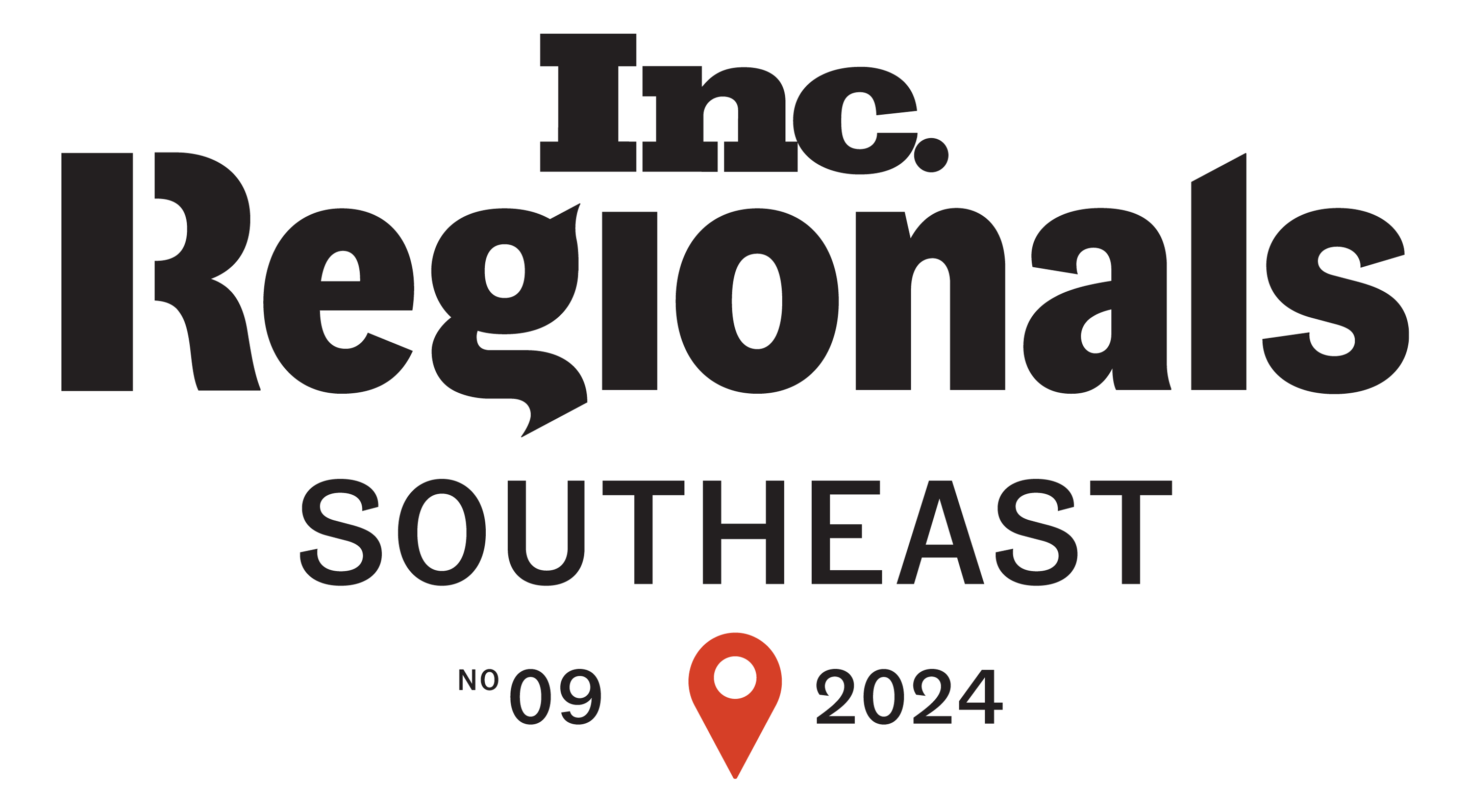Managing warranties efficiently is no easy task, but it's crucial for ensuring customer satisfaction and fostering lasting relationships. For manufacturers and OEMs (Original Equipment Manufacturers), getting the warranty activation process right is the first critical step. From gathering the correct data to setting up an intuitive online platform, there are several essential components to master.
In this comprehensive guide, we'll dive deep into the key steps for streamlining warranty activation and process management. You'll also learn how to maintain accurate data, understand the significance of pricing conditions in claim management, and much more. So buckle up and get ready to discover tips and strategies that will help you not only meet but exceed your customers' expectations!
Essential Steps in Warranty Activation
When it comes to warranties, activating them correctly is the first hurdle to overcome. Let's go through the important components to ensure you get it right.
Specific Data Needed for Activation
Gathering the correct data is crucial for activating warranties. Here's what you'll generally need:
- Customer Information: Name, address, email, and phone number.
- Product Details: Model number, serial number, date of purchase, and place of purchase.
- Proof of Purchase: Usually a receipt or an invoice.
- Installation Details: If applicable, information about who installed the product and when.
Variations Based on Product Type
Not all products are the same, so their warranty activation steps can vary. For example:
- Electronics: Often require the serial number and online registration.
- Home Appliances: May need installation details and a completed warranty card.
- Industrial Equipment: Might require detailed inspection reports and certification from authorized installers.
Industry-Specific Regulations to Consider
Depending on the industry, you'll have different regulations to follow. Here are a few examples:
- Health Devices: Must comply with specific health regulations and certifications.
- Consumer Electronics: Often involve data privacy laws concerning the information collected.
- Construction Materials: May need compliance with safety and material standards.
Staying updated with these regulations is crucial to ensure compliance and avoid legal issues.
Setting Up an Online Activation Platform
A great way to streamline warranty activation is by setting up an intuitive online platform. Key features to include:
- User-Friendly Interface: Ensure it's simple for customers to navigate.
- Automated Confirmation: Send automated emails confirming the warranty activation.
- Data Security: Protect the data through secure encryption methods.
Communicating Warranty Terms Clearly
Make sure your customers understand their warranty terms by clearly communicating:
- What is Covered: Specific parts or conditions.
- Duration: How long the warranty lasts.
- Exclusions: What is not covered (e.g., wear and tear).
Clear communication builds trust and reduces misunderstandings.
Benefits of Accurate Customer Information
Accurate customer information helps in several ways:
- Efficient Communication: Easier to update customers about their claims.
- Targeted Marketing: Personalized offers and promotions.
- Data Analytics: Better customer insights and trends.
Role of Automated Systems in Data Collection
Automated systems can simplify data collection through:
- Online Forms: User-friendly forms that collect data accurately.
- Integration with CRM: Sync with CRM systems for better data management.
- Error Reduction: Minimize manual errors.
Ensuring Data Accuracy Through Regular Updates
Independent checks and updates make fields like the date of purchase and product details reliable. Here's how:
- Periodic Audits: Schedule regular audits to verify data.
- Customer Feedback: Encourage customers to update their information.
- Training Staff: Ensure your team knows the importance of accurate data entry.

Maintaining Accurate Equipment Data and Customer Warranty Dates
Keeping accurate records is essential for seamless warranty management. Here's how to do it right.
Ideal Format for Storing Equipment Data
Equipment data should be stored systematically:
- Digital Records: Use cloud-based systems for easy access.
- Structured Databases: Ensure data is organized logically.
- Secure Storage: Protect sensitive information with robust security measures.
Frequency of Updating Customer Warranty Dates
Regular updates are key:
- After Purchases: Update immediately after a product is registered.
- Annual Reviews: Perform annual data reviews to catch any errors.
- Post-Service Checks: Update data after any repair or maintenance service.
Automated Tools for Simplifying the Process
Various tools can automate updates:
- CRM Systems: Automate customer data management.
- ERP Software: Integrate with other business processes.
- Reminders and Alerts: Set automatic reminders for data reviews.
Importance of Real-Time Data Access
Real-time access allows for:
- Quick Decision-Making: Fast access to data enables swift decisions.
- Customer Satisfaction: Immediate clarification to customers' queries.
- Efficiency: Reduces time spent searching for information.
Training Staff on Data Management
Education is vital:
- Workshops: Regular training sessions for your staff.
- Guidelines: Provide clear data entry and management guidelines.
- Ongoing Support: Offer continuous support to resolve any issues.
Using Data Analytics to Spot Trends
Analytics can help:
- Identify Common Issues: Spot frequent problems with products.
- Customer Preferences: Understand what your customers value most.
- Improve Services: Make data-driven decisions to enhance your offerings.
Ensuring Compliance with Data Privacy Laws
Always stay compliant:
- Data Collection: Inform customers about what data you collect and why.
- Secure Storage: Use encryption and secure backups.
- Limited Access: Restrict data access to authorized personnel only.
Periodic System Updates
Tech evolves fast, so keep your systems updated:
- Software Updates: Regularly update all software to the latest versions.
- Security Patches: Apply security patches promptly.
- System Audits: Conduct periodic system audits to ensure everything runs smoothly.
Significance of Pricing Condition Records in Warranty Claim Management
Pricing condition records are essential for managing warranty claims effectively. Let's see why.
Impact of Pricing Condition Records on Reimbursement Amounts
Accurate pricing records ensure fair reimbursements:
- Standardized Pricing: Avoid discrepancies in claim amounts.
- Transparent Processes: Build trust with clear pricing structures.
Standardization Across Different Products
Consistent records make processing easier:
- Uniform Templates: Use standard templates for all products.
- Clear Guidelines: Establish clear rules for pricing conditions.
- Effective Training: Train staff to adhere to these standards.
Best Practices for Regular Updates
Keep records current:
- Scheduled Reviews: Regularly review and update pricing conditions.
- Customer Feedback: Use customer feedback to adjust prices when necessary.
- Market Analysis: Conduct market research to stay competitive.
Automated Systems for Pricing Management
Automation can simplify the process:
- Price Management Software: Tools that can automatically update prices.
- Integration with ERP: Connect with ERP systems for smooth operations.
- Alert Systems: Set up alerts for price changes and updates.
Communicating Pricing Conditions to Customers
Clear communication avoids confusion:
- Transparent Policies: Make pricing policies easy to understand.
- Online Information: Update prices on your website regularly.
- Customer Support: Provide a helpline to address pricing queries.
Aligning Pricing with Market Trends
Stay competitive by aligning prices with the market:
- Competitor Analysis: Regularly compare prices with competitors.
- Customer Surveys: Understand what customers are willing to pay.
- Flexible Pricing: Be ready to adjust prices based on market changes.
Importance of Cross-Department Coordination
Ensure all teams are in sync:
- Regular Meetings: Conduct meetings among different departments.
- Shared Databases: Use shared systems for accessing updated pricing.
- Clear Roles: Define clear roles and responsibilities for pricing updates.
Using Software for Pricing Analytics
Leverage technology for insights:
- Data Patterns: Identify trends and predict price movements.
- Customer Behavior: Understand how pricing affects purchasing decisions.
- Revenue Impact: Analyze how prices influence revenue.

Key Components of a Customer Claim Processing Procedure
Now, we'll delve into the nuts and bolts of processing customer warranty claims.
Initiating a Customer Warranty Claim Effectively
The first step is to initiate the claim:
- Easy-to-Find Information: Make sure instructions are easy to find.
- Clear Guidelines: Provide clear, step-by-step instructions.
- Accessible Forms: Use online forms for ease.
Necessary Steps for Validating a Claim
Validate the claim thoroughly:
- Proof of Purchase: Check for receipts or invoices.
- Product Inspections: Conduct inspections if required.
- Customer Verification: Confirm the customer's identity and purchase details.
Ensuring Accurate Pricing for Materials and Labor
Accurate pricing prevents discrepancies:
- Detailed Pricing Lists: Keep updated lists of material and labor costs.
- Third-Party Verification: Use third-party services to ensure fair pricing.
- Regular Audits: Conduct audits to maintain accuracy.
Streamlining the Claim Process
Efficiency is key:
- Dedicated Teams: Have specialized teams for processing claims.
- Step-by-Step Workflow: Create a clear workflow for claims.
- Customer Communication: Keep customers informed at every step.
Using Technology for Claim Management
Leverage tech tools:
- Claim Management Software: Use software to manage the entire process.
- Automated Notifications: Send automated updates to customers.
- Data Security: Ensure customer data is protected.
Handling Disputes and Complaints
Resolve issues effectively:
- Clear Policies: Have defined policies for handling disputes.
- Customer Service Training: Train your team to handle complaints professionally.
- Follow-Up: Always follow up to ensure resolution satisfaction.
Tracking and Reporting Claims
Stay on top of things:
- Real-Time Tracking: Use tools to track claims in real time.
- Regular Reports: Generate regular reports for insights.
- Trend Analysis: Identify and address common issues.
Measuring Customer Satisfaction
Feedback is crucial:
- Surveys: Send out satisfaction surveys.
- Feedback Channels: Provide multiple ways for customers to give feedback.
- Continuous Improvement: Use feedback to improve your processes.
Ensuring Transparency and Consistency in Warranty Claim Processing
Consistency and transparency are vital for customer trust and smooth operations.
Checks and Validations for Transparency
Have robust checks in place:
- Audit Trails: Keep records of all transactions.
- Regular Reviews: Perform regular reviews of claims and procedures.
- Independent Audits: Use third-party audits for impartiality.
Restricting Editing Options for Consistency
Limit access to sensitive data:
- User Permissions: Only authorized personnel should edit key information.
- Audit Logs: Keep logs of who accessed or changed data.
- Regular Training: Train staff on the importance of data integrity.
Tools for Transparent Value Maintenance
Use the right tools:
- Transparency Software: Implement systems designed for transparency.
- Real-Time Dashboards: Provide real-time visibility into processes.
- Automated Alerts: Set alerts for any changes or disruptions.
Importance of Standard Operating Procedures (SOPs)
Having SOPs ensures consistency:
- Detailed SOPs: Create detailed SOPs for each process.
- Employee Training: Train employees to follow these procedures strictly.
- Continuous Updates: Regularly update SOPs based on feedback and new regulations.
Customer Communication and Transparency
Open communication builds trust:
- Regular Updates: Keep customers informed about their claims.
- Clear Guidelines: Provide clear guidelines for submitting claims.
- Feedback Channels: Offer easy ways for customers to ask questions or voice concerns.
Importance of Accurate Record-Keeping
Accurate records are non-negotiable:
- Centralized Database: Use a single, centralized system for all records.
- Regular Backups: Perform regular backups to prevent data loss.
- Data Integrity Checks: Conduct periodic checks for data accuracy.
Handling Exceptions and Unusual Cases
Be prepared for the unexpected:
- Exception Handling Procedures: Have clear procedures for handling exceptions.
- Specialist Teams: Set up teams to handle complicated cases.
- Regular Reviews: Review exception handling procedures periodically.
Continuous Improvement
Never stop improving:
- Feedback Loops: Use feedback to continuously improve your processes.
- Performance Metrics: Regularly review performance metrics.
- Industry Benchmarks: Compare your processes against industry standards.
Benefits of Formalizing the Warranty Registration Process
Formalizing the process of submitting warranty registrations has numerous benefits.
Improving Dealer Participation Through Formalization
Clear guidelines help dealers:
- Training: Offer training programs for dealers.
- Incentives: Provide incentives for consistent registration submissions.
- Support: Offer 24/7 support for any issues they might face.
Key Elements of a Structured Process
A structured process should include:
- Step-by-Step Guide: Provide a detailed guide on how to submit registrations.
- Clear Deadlines: Set clear deadlines for submissions.
- Regular Follow-Ups: Perform regular follow-ups to ensure compliance.
Incentivizing Dealers to Submit Warranty Registrations
Encourage timely submissions:
- Financial Incentives: Offer rebates or bonuses.
- Recognition Programs: Recognize top-performing dealers.
- Training and Resources: Provide all necessary resources and training.
Automating the Registration Process
Make it easier with automation:
- Online Portals: Create easy-to-use online registration portals.
- Automated Confirmations: Send automated confirmation emails.
- Integration: Ensure seamless integration with existing systems.
Tracking Dealer Performance
Monitor dealer activities:
- Performance Metrics: Track dealer registration rates and timelines.
- Regular Reports: Generate and review performance reports.
- Feedback Mechanisms: Offer ways for dealers to provide feedback.
Ensuring Dealer Compliance
Keep everyone on the same page:
- Clear Rules: Set clear rules for registration submissions.
- Audit Trails: Maintain audit trails for regulatory compliance.
- Regular Training: Regularly train dealers on new requirements.
Benefits to Customers
A formalized process benefits customers too:
- Quick Activations: Faster warranty activations.
- Better Support: Easier and quicker support and claim processes.
- Increased Trust: Building of trust through professionalism and efficiency.
Streamlining Communication Between Dealers and Manufacturers
Improve coordination:
- Regular Meetings: Schedule regular meetings with dealers.
- Communication Channels: Set up clear communication channels.
- Feedback Loops: Create feedback loops to address any concerns.
Automating the Warranty Registration Process
Leveraging technology can simplify warranty registrations significantly.
Tools for Automation
Several tools can help automate the process:
- CRM Integrations: Use CRM systems for automated workflows.
- Online Forms: Easy-to-use online forms for customers and dealers.
- AI Chatbots: Employ AI chatbots for initial customer interactions.
Ensuring Seamless Integration
Compatibility is key:
- APIs: Use APIs to integrate new tools with existing systems.
- Data Migration: Smoothly transfer data with minimal disruption.
- Regular Updates: Ensure all systems are regularly updated.
Benefits of Online Submissions
Online submissions are convenient:
- Accessibility: Available 24/7 for customers and dealers.
- Instant Confirmation: Immediate confirmation of submissions.
- Data Accuracy: Reduce errors and manual data entry mistakes.
Safeguarding Customer Data
Make sure data is secure:
- Encryption: Use strong encryption methods.
- Access Control: Restrict who can access sensitive data.
- Regular Audits: Conduct regular security audits.
Improving Process Efficiency
Keep refining:
- Continuous Monitoring: Regularly monitor the effectiveness of the automated systems.
- Feedback: Encourage users to provide feedback.
- Updates: Keep systems updated based on feedback and new technologies.
Customizable Alerts and Notifications
Stay informed:
- Real-Time Alerts: Set up real-time alerts for key events.
- Custom Notifications: Customize notifications based on user roles.
- Follow-Up Reminders: Automated follow-up reminders for incomplete tasks.
Training Staff on New Tools
Make sure everyone is on board:
- Comprehensive Training: Offer in-depth training sessions.
- Support Resources: Provide user manuals and online help centers.
- Regular Updates: Keep staff informed of any changes or updates.
Measuring the Impact of Automation
Track your success:
- Performance Metrics: Monitor key performance indicators.
- Customer Feedback: Collect and analyze customer feedback.
- Cost Savings: Track savings from reduced manual labor.
Mastering warranty activation and process management is essential for manufacturers and OEMs to ensure customer satisfaction and foster long-term relationships. By gathering accurate data, setting up user-friendly online platforms, and maintaining up-to-date records, companies can streamline their warranty processes and reduce potential issues. Implementing automated systems not only simplifies data collection and management but also enhances overall efficiency and accuracy.
Clear communication of warranty terms, regular staff training, and adherence to industry-specific regulations further strengthen the warranty process. Leveraging data analytics to identify trends and using real-time data access for quick decision-making are crucial steps towards achieving excellence in warranty management.
Moreover, effective pricing condition records and a structured customer claim processing procedure ensure fair reimbursements and customer trust. Formalizing the warranty registration process, incentivizing dealer participation, and automating submissions can significantly improve process efficiency and customer satisfaction.
In a competitive market, staying ahead requires continuous improvement, compliance with data privacy laws, and seamless integration of automated tools. By following these comprehensive strategies, manufacturers can not only meet but exceed their customers' expectations, building a strong foundation for sustained success.
Next Steps
Ready to turn your warranties into a customer loyalty goldmine?
Don't let warranty management be an afterthought. Embrace it as a powerful opportunity to build trust, showcase your values, and create customers for life.
And if you want to take your warranty game to the next level, it's time to learn more about OnPoint Warranty.
OnPoint Warranty is your secret weapon for transforming warranties from a necessary evil into a competitive advantage. With their cutting-edge platform and expert support, you can:
- Streamline your claims process for maximum efficiency and customer satisfaction
- Offer extended warranties that delight customers and differentiate your brand
- Leverage warranty data for personalized, proactive customer engagement
- And much more
If you're serious about building customer loyalty that lasts, you can't afford to ignore the power of warranties. And you can't afford to settle for anything less than the best in warranty management.
So what are you waiting for? Give us a shout today and learn how we can help you turn warranties into a customer loyalty goldmine. Your customers (and your bottom line) will thank you.








